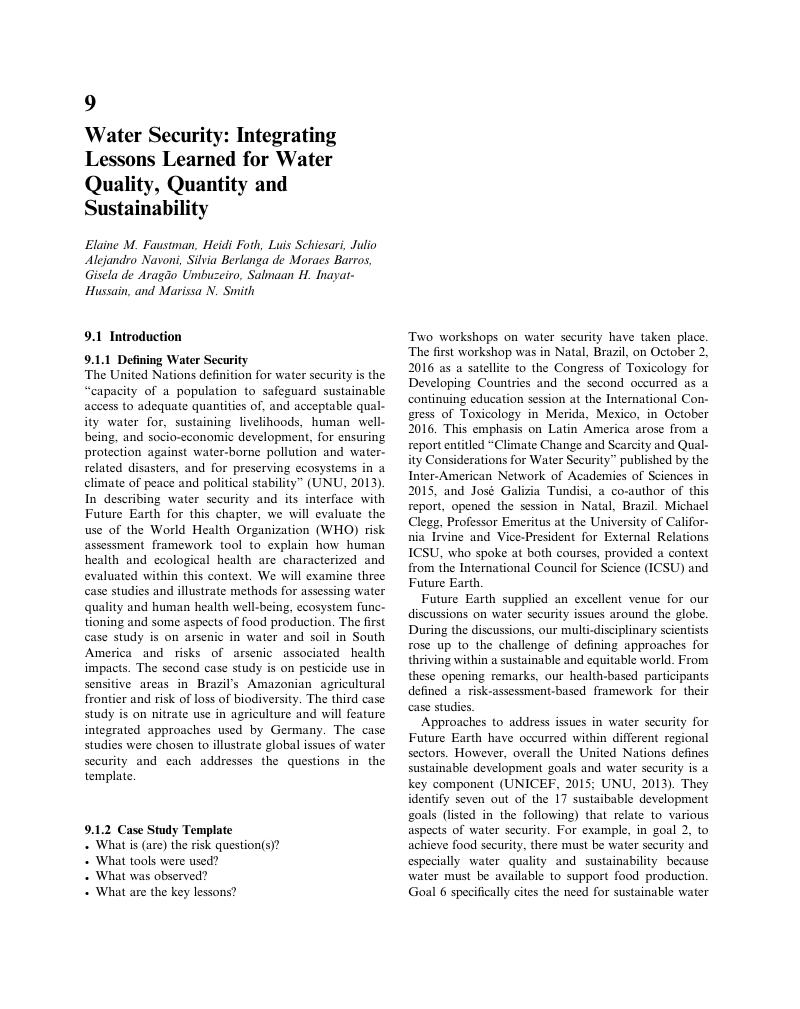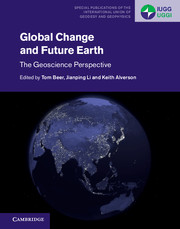Book contents
- Global Change and Future Earth
- Special Publications of the International Union of Geodesy and Geophysics Series
- Global Change and Future Earth: The Geoscience Perspective
- Copyright page
- Contents
- Contributors
- Preface
- Acknowledgments
- Abbreviations
- Part I Future Earth and Planetary Issues
- Part II Future Earth and Geodetic Issues
- Part III Future Earth and the Earth’s Fluid Environment
- 7 Future Earth and the Cryosphere
- 8 Geographical Research and Future Earth
- 9 Water Security: Integrating Lessons Learned for Water Quality, Quantity and Sustainability
- 10 Decadal Coupled Ocean–Atmosphere Interaction in North Atlantic and Global Warming Hiatus
- 11 Sea Level Rise and Future Earth
- 12 Ocean Circulation: Knowns and Unknowns
- Part IV Future Earth and Regions
- Part V Future Earth and Urban Environments
- Part VI Future Earth and Food Security
- Part VII Future Earth and Risk, Safety and Security
- Part VIII Climate Change and Global Change
- Name Index
- Subject Index
- References
9 - Water Security: Integrating Lessons Learned for Water Quality, Quantity and Sustainability
from Part III - Future Earth and the Earth’s Fluid Environment
Published online by Cambridge University Press: 22 October 2018
- Global Change and Future Earth
- Special Publications of the International Union of Geodesy and Geophysics Series
- Global Change and Future Earth: The Geoscience Perspective
- Copyright page
- Contents
- Contributors
- Preface
- Acknowledgments
- Abbreviations
- Part I Future Earth and Planetary Issues
- Part II Future Earth and Geodetic Issues
- Part III Future Earth and the Earth’s Fluid Environment
- 7 Future Earth and the Cryosphere
- 8 Geographical Research and Future Earth
- 9 Water Security: Integrating Lessons Learned for Water Quality, Quantity and Sustainability
- 10 Decadal Coupled Ocean–Atmosphere Interaction in North Atlantic and Global Warming Hiatus
- 11 Sea Level Rise and Future Earth
- 12 Ocean Circulation: Knowns and Unknowns
- Part IV Future Earth and Regions
- Part V Future Earth and Urban Environments
- Part VI Future Earth and Food Security
- Part VII Future Earth and Risk, Safety and Security
- Part VIII Climate Change and Global Change
- Name Index
- Subject Index
- References
Summary

- Type
- Chapter
- Information
- Global Change and Future EarthThe Geoscience Perspective, pp. 121 - 130Publisher: Cambridge University PressPrint publication year: 2018



